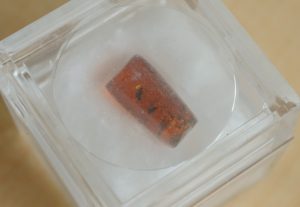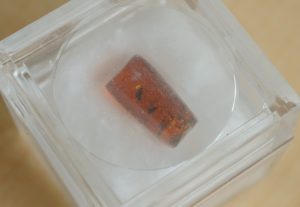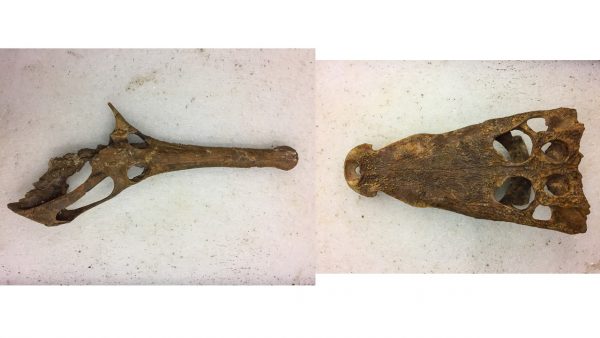
There’s this idea that, from about 233 to 66 million years ago, the planet belonged to the dinosaurs. That from the late Triassic till the end of the Cretaceous the world was exclusively the domain of this lineage of reptiles. Some even think that all the other types of animals that inhabited Earth during this time are also called ‘dinosaurs’ simply due to the fact that they existed during this key time span (see our article on what dinosaurs really are for why this is incorrect).
It’s certainly true that the Dinosauria are one of the most noticeable, beloved, and defining groups of the Mesozoic Era. No one’s going to be surprised that a museum dedicated to dinosaurs (not to mention your humble author writing from there) is going to have something of a bias towards these creatures. However, I think it’s worth asking why exactly we think of dinosaurs as ruling the Earth. Were they literally in charge, telling all the other animals what to do like some sort of prehistoric feudal system? Of course not.
I think that, when most people say dinosaurs once ‘ruled’ the Earth, they really just mean they were the most abundant or most charismatic group worldwide. It certainly true that for most of the Mesozoic dinosaurs inhabited every continent, in ecosystems ranging from dry deserts to lush marshes to temperate forests. Some were also very common, living in groups of hundreds or even thousands, and some species grew astoundingly large.
It’s not fair to say that dinosaurs were the only animals around at the time, though, far from it. And it’s almost certain that in many ecosystems they were not the most numerous animals. This might not seem true at first, since in many fossil locations we find many more dinosaur bones than we do remains of any other kind of animals. But there’s a good reason for it, and it’s not because the world’s population was 99% dinosaurian at the time. Dinosaur bones are often (but not always) pretty darn big. This makes them easy for humans to find and dig up. The bones of smaller animals are often harder to spot, and they break down faster. This is what we call a collecting bias. There’s also the fact that in many prehistoric environments, such as those that had a lot of moving water, large and robust animal remains stand a better chance of fossilizing than small delicate ones. This is called a preservational bias. I think it goes without saying that there’s a sort of ‘entertainment’ bias in the general public that skews all thought of prehistoric animals towards dinosaurs. Is there an academic bias towards dinosaurs? I doubt it, since there are more paleontologists out there that study other kinds of fossil animals, especially invertebrates (these paleontologists just might not be quite as flamboyant as many of the dinosaur folks).
Anyway, being the easiest animals to find or the most entertaining to a bunch of primates doesn’t mean that dinosaurs are inherently superior to the creatures they shared the planet with. They were extremely successful for a long time, of course, but dinosaurs did not exist in a vacuum. So what other kinds of animals did they coexist with? It might appear that the Mesozoic was an alien world completely unlike how things are today, but many of the animals during that time would have looked pretty familiar to our eyes.
It’s important for humans, with our normally vertebrate-centric brains, to remember that most animals that have ever existed are invertebrates, and most invertebrate species are arthropods. These are hard-bodied invertebrates with segments and paired, jointed appendages. Insects, spiders, crustaceans, and centipedes are all arthropods. Alongside them are a variety of fossil groups, like the trilobites. Arthropods have basically been around for as long as have animals existed, and though some groups came and went over time, we’ve always had an immense diversity of these small creatures right under the noses of the larger animals. Insects themselves arose in the Devonian, and most current lineages date back to the Mesozoic or earlier. Former Philip J. Currie Dinosaur Museum paleontologists have even identified fossils mayfly larvae from the late Cretaceous Wapiti Formation of northwestern Alberta (Bell et al., 2013).

Insects preserved in amber are some of the best ways we can figure out what invertebrates were around in prehistoric times. Photo by Nicholas Carter
Mollusks, the second most diverse phylum of animals, showed up around the same time as the arthropods. It not always easy to trace their fossil record, since so many mollusks were and are soft-bodied, and don’t fossilize well. Luckily for us, though, groups with hard shells like snails, clams, and ammonites left remains of themselves behind. Ammonites, those wonderful squid-like creatures in their spiral shells, populated the oceans since the Devonian and got through several mass extinctions until finally meeting their demise at the end of the Cretaceous. A dip in the Mesozoic seas would have shown a world teeming with these tentacle-bearing creatures.
Many other invertebrate groups that are still around today shared the planet with the dinosaurs, and we’d be here all day if we listed them all. Sponges, corals, sea stars, flatworms, roundworms, ringed worms, and all variety of microscopic critters filled out Earth’s biodiversity then as they do now. It’s worth remembering that these smallest of life forms had dominion over even the largest. Many specimens of Tyrannosaurus rex, such as Chicago’s famous ‘Sue’, show nasty bone infections caused by microorganisms that would have likely been very painful and may have hastened their deaths (Wolff et al, 2009).
Let’s move on to the more personally comfortable world of vertebrates. For a long time, this group had been confined to the water, swimming with fins and tails and breathing with gills. We call vertebrates that do this ‘fish’, and fish that lost their gills at some point in their life and developed feet for walking we call ‘tetrapods’. Fish had been doing their thing since long before the dinosaurs. A fishing trip during the Mesozoic would have landed you some pretty weird things by modern standards, but some fish wouldn’t have been terribly strange at all.
Chondrichthyes, sharks and their cousins the chimeras, were already an old and venerable lineage by the time the dinosaurs showed up. Some really bizarre orders of ‘sharks’ came and went during the pre-dinosaur Paleozoic, but around the late Triassic the ancestors of modern groups began to show up. Sharks and their relatives occupied all sorts of saltwater and brackish environments during the Mesozoic. Teeth of small sharks and the guitarfish Myledaphus are very common microfossils throughout southern Alberta.
Bony fish also existed during this time. While countless orders of bizarre ray-finned fishes came and went in the oceans and rivers of the prehistoric world, it wasn’t all extinct groups like Pycnodontiformes and Pachycormiformes. If you went fishing in the coastal bayous of Cretaceous western North America for example, it wouldn’t be too different from a similar excursion in the American southeast. Fish very similar to modern sturgeons, gar, and bowfin could be encountered. The oceans were occupied by the early cousins of tarpon and herring. Strange giant predators like Xiphactinus and Ichthyodectes, distant cousins of modern mooneyes, haunted the Cretaceous Western Interior Seaway. As for the lobe-finned fishes, they had been hit hard by the Permian mass extinction, though the tetrapod members of this group went on to thrive on the land. Lungfish were around then as they are now, and the coelacanth is a famous cryptic survivor from the Mesozoic that was known from fossil remains before live species were found.
As for tetropods or ‘land vetebrates’ that coexisted with the dinosaurs, it’s a similar case that some would have looked very outlandish, but some would have been downright familiar to our eyes. Modern amphibians (Lissamphibia) arose in the Triassic, meaning things very similar to our present day frogs, salamanders, and caecilians occupied the Mesozoic wetlands. There was also the salamander-like albanerpetontids who ranged from the late Jurassic to the beginning of the Pleistocene. The possible ancestors of amphibians, the old temnospondyls, continued to hang on in some locations until the early Cretaceous as well. Some, like the Australian Koolasuchus, grew to huge sizes and lived in cool valleys that were inhospitable for the crocodiles that would have competed with it.
Speaking of crocodiles (or, as I should say, the much broader crocodylomorphs), it’s no secret that they’ve been an important part of life from the Triassic right up to present day. Because of this, many people think of crocodiles as ‘primitive’ leftovers from a distant primordial world when reptiles dominated the land, but this isn’t really fair to crocodiles. The early members of the Crocodylomorpha, like Hesperosuchus, were long-legged species that ran around on land snapping up prey. The late Cretaceous Simosuchus was a terrestrial omnivore. Throughout the Mesozoic, crocodylomorphs existed in all sorts of environments and niches, from big land-based predators to fully marine forms whose limbs had become flippers. Crocodiles resembling the forms we have today didn’t even show up until late Cretaceous period. The semi-aquatic ambush predator lifestyle that modern crocodilians exhibit is just one of many strategies these animals tried out, and it was clearly a successful one. Cretaceous Alberta was home to a few alligator-like species such as Albertochampsa and Leidyosuchus. Many folks have heared of the tyrannosaur-sized crocodilian called Deinosuchus. This creature haunted the shorelines of the Western Interior Seaway, and certainly might have preyed on dinosaurs when given the chance (Schwimmer, 2002). So much for being primitive.
The Mesozoic is nicknamed the ‘Age of Reptiles’, and while this often thought of as a reference to the presence of dinosaurs during this time, the diversity of other sauropsids during this era would have been something to behold. It was a good time for marine reptiles, though most groups of ocean-going sauropsids have no close relatives today. Ichthyosaurs and plesiosaurs are some of the more cosmopolitan examples of this lot, and even though they often get lumped in with the dinosaurs, neither were very closely related to them.

The impression of vertebrae from a Cretaceous plesiosaur from northern Alberta (left), and the skeletons of the mosasaur Tylosaurus (upper right) and plesiosaur Thalassomedon (lower right). Photo by Nicholas Carter
Turtles were a staple fixture in many Mesozoic ecosystems, and ranged in form from tiny pond-dwellers and terrestrial herbivores to giant car-sized marine turtles like Archelon and Protostega. Alberta was home to all sorts of turtle species that coexisted with the dinosaurs, such as the softshell Aspideretoides and the tortoise-like Basilemys (Brinkman, 2005). Lepidosaurs (tuataras, squamates & their extinct relatives) were there as well ever since the Triassic. Lizards at the time ran the full size spectrum from small burrowing and climbing insectivores to the giant whale-like mosasaurs that dominated the seas (When Mosasaurs Ruled the World?). One group that seemed to thrive for most of the Mesozoic and even outlasted the nonavian dinosaurs substantially was the choristoderes, a group of semi-aquatic reptiles that included things such as the superficially crocodile-like Champsosaurus. This genus in particular had a good run, but sadly died out in the Eocene, which is a shame because it would be interesting to see how it resembled and differed from crocodiles in its soft tissue and behavior as well as its skeleton. And of course, there was the flying not-quite-dinosaurs-but-pretty-close pterosaurs. You can check out our quick summary of pterosaurs earlier on this blog, but don’t think of them as merely prehistoric background noise- pterosaurs were fascinating and important animals independent of their association with dinosaurs.

The skulls of Champsosaurus (left) and the alligatoroid Leidyosuchus (right). While the two are superficially similar, and managed to coexist, they aren’t closely related. Photo by Nicholas Carter
Pop-culture paleontology sources often, I find, make it seem like mammals suddenly showed up out of nowhere right after the dinosaurs met their fate, and that from then on the world was theirs. This is flawed for a few reasons. Firstly, mammals go back much farther than you might realize. Our earliest synapsid ancestors were some of the most common land vertebrates during the Permian period, with the first mammaliaform ‘proto-mammals’ appearing right around the time as the first dinosaurs and the first ‘true mammals’ showing up by the late Jurassic at least (Rowe, 1988). Mammals during the Jurassic and Cretaceous generally didn’t get too big, or exhibit as huge a diversity of forms, as they do today. The majority of Mesozoic mammals are known from their teeth, since that’s the hardest part of a mammal’s body, and so we’ve been able to figure out that most of them looked vaguely similar to modern day opossums, rodents, and mustelids. Mammals back then weren’t kept small because the dinosaurs were eating them, however. It’s just that the dinosaurs had been so good at filling in the ecological roles of large predators and herbivores for so long, there wasn’t much room for mammals to expand into those roles until the Paleogene.
Hopefully it’s clear now that the ‘Age of Dinosaurs’ wasn’t a time exclusive to that particular group of animals that we all love so dearly. Dinosaurs were obviously a crucial part of the ecosystems they inhabited, and no doubt helped re-shape the world during their time. They’ve also left a fascinating fossil legacy behind that we’re lucky enough to discover and learn about. But we’re just as lucky to have all the other weird and nifty critters that shared the Mesozoic world. We can see echoes of that time in our living species today, and if there ever was a time when dinosaurs ‘ruled the world’, it’s still continuing today. All you have to do it grab your binoculars your birding guide.
References
P. R. Bell, F. Fanti, J. Acorn and R. S. Sissons. 2013. Fossil mayfly larvae (Ephemeroptera, cf. Heptageniidae) from the Late Cretaceous Wapiti Formation, Alberta, Canada. Journal of Paleontology 87:147-150
Brinkman, D.B. 2005. Turtles: diversity, paleoecology, and distribution. In: Currie, P.J., and Koppelhus, E.B. (eds), Dinosaur Provincial Park: A Spectacular Ancient Ecosystem Revealed. Indiana University Press: Bloomington and Indianapolis, p. 202-220.
Schwimmer, David R. (2002). “The Size of Deinosuchus”. King of the Crocodylians: The Paleobiology of Deinosuchus. Indiana University Press. pp. 42–63.
Rowe, T. S. (1988). “Definition, diagnosis, and origin of Mammalia” (PDF). Journal of Vertebrate Paleontology. 8 (3): 241–264.
Wolff, E. D. S.; Salisbury, S. W.; Horner, J. R.; Varricchi, D. J. (2009). Hansen, D. M. (ed.). “Common Avian Infection Plagued
the Tyrant Dinosaurs”. PLoS ONE. 4 (9): e7288.
Nicholas Carter is the coordinator of education and program development at the Philip J. Currie Dinosaur Museum. He is a keen naturalist interested in all things science and nature-related, especially the biology and diversity of vertebrate animals.

